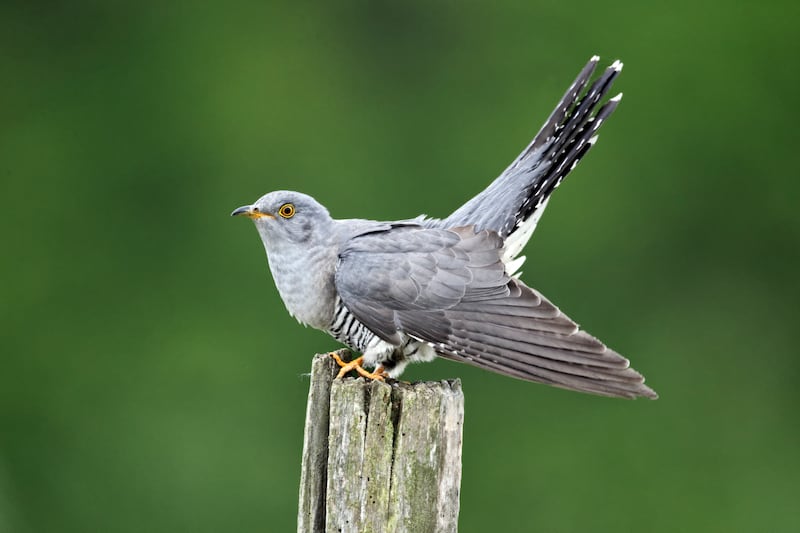Ecclesiastes says, “There is a time for everything, and a season for every activity under the heavens,” reassuring us of the appointed times various incidents occur in life. The natural world each season has its happenings, events which reoccur with unerring accuracy each year.
Despite the arrival of Storm Kathleen recently, and the stubborn, unsettled weather, spring’s annual dance continues unruffled. Walking through a local woodland last week, thick clusters of wild garlic foliage and emerging bluebells carpeted the floor as they always do at this time of year. Birds were in full song announcing their presence and territories, chiffchaffs were joined by the willow warbler, while a blackcap pushed out its busy fluty song, all as I watched my first swallows of the year above the waters of Lough Erne.
In damp fields, wayside margins, and other moist environments, the pink-white hue of ‘lady’s smock’ or cuckoo flower is also, as Shakespeare says, beginning to “paint the meadows with delight”.
Now at their appointed time, their pale lilac flowers will rest and droop in abundance on slender stems through to June, coinciding with the arrival of our first cuckoos. An important foodplant for caterpillars of the orange-tip butterfly, the cuckoo flower has acquired a great variety of common and local names.

‘Lady’s smock’ probably refers to the pale, pinkish and slightly cupped nature of the petals resembling the outer garment which ladies might have worn to protect their clothing while working.
One of its Irish names, Léine Mhuire, ‘Mary’s shirt’ or night-dress, also reflects this clothing association while Lus na mban, ‘ladies herb’, points again to its feminine affinity. Other names for the plant include milkmaids, fairy flower and May flower, since it flowers on through the month of May. Its scientific name, Cardamine pratensis, gives a clue to where it thrives - ‘pratensis’, Latin for meadow, and ‘cardamine’ from the Greek words kardamine and kardamon for watercress and pepper grass, the leaves of the plant resembling cress.
Peter Wyse Jackson in Ireland’s Generous Nature (2014) notes some references to its medicinal uses in Ireland over the generations, including as a treatment for “scurvy, kidney stones, epilepsy, and ulcers”, and also as an aid to digestion. Douglas Clyne, in Gaelic Names for Flowers and Plants (1989) gives the interesting name ‘clappede pouch’ used for the plant in parts of Ireland, this resembling the ‘rattle pouches’ or pouch used by lepers at an isolated spot to receive alms.
This was hooked on to a long pole with clappers or bells to attract attention. Well known botanist and naturalist Richard Mabey in his Flora Britannica (1996) notes that the emergent cuckoo flower is a very accurate predictor for hearing the first call of the mischievous bird itself.
Whilst I haven’t yet heard the cuckoo, its much-anticipated call will soon, no doubt, drift over hills and bogs, marking time again and lifting the human spirit.
One of the best-known poems from Irish harper and composer Séamus Dall Mac Cuarta, Fáilte don éan, written in 1707, greets the cuckoo on its annual return with the opening words “Fáilte don éan is binne ar craoibh”; “Welcome to the bird, the sweetest in the trees.”
Wordsworth too welcomes the bird, calling it “darling of the spring”. The timing of the cuckoo’s return must coincide with the nesting period of one of its main host species, the meadow pipit, suitably named in Irish ‘giolla na cuaiche’, servant of the cuckoo.
With the blossoming of the cuckoo flower, arrival of swallow, willow warbler and cuckoo itself, all during April, nature’s timing appears finely tuned.








